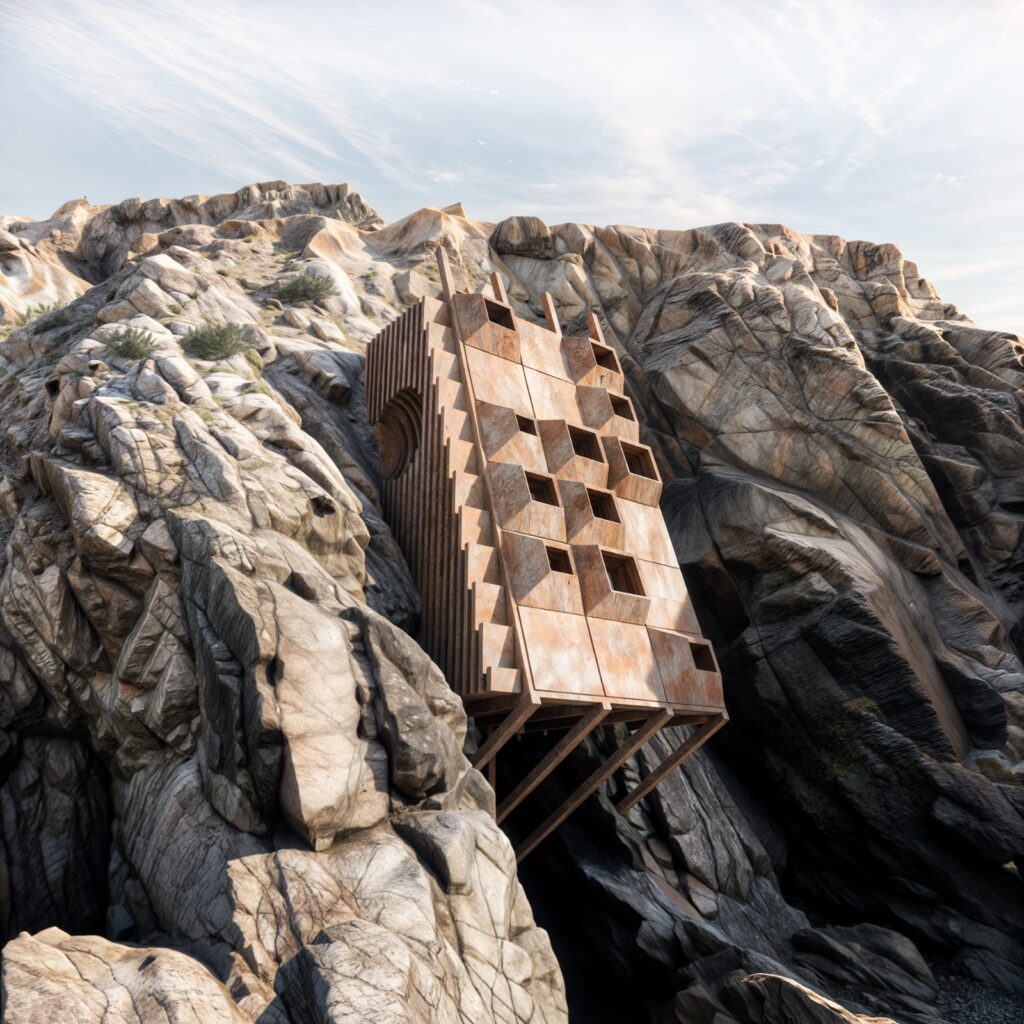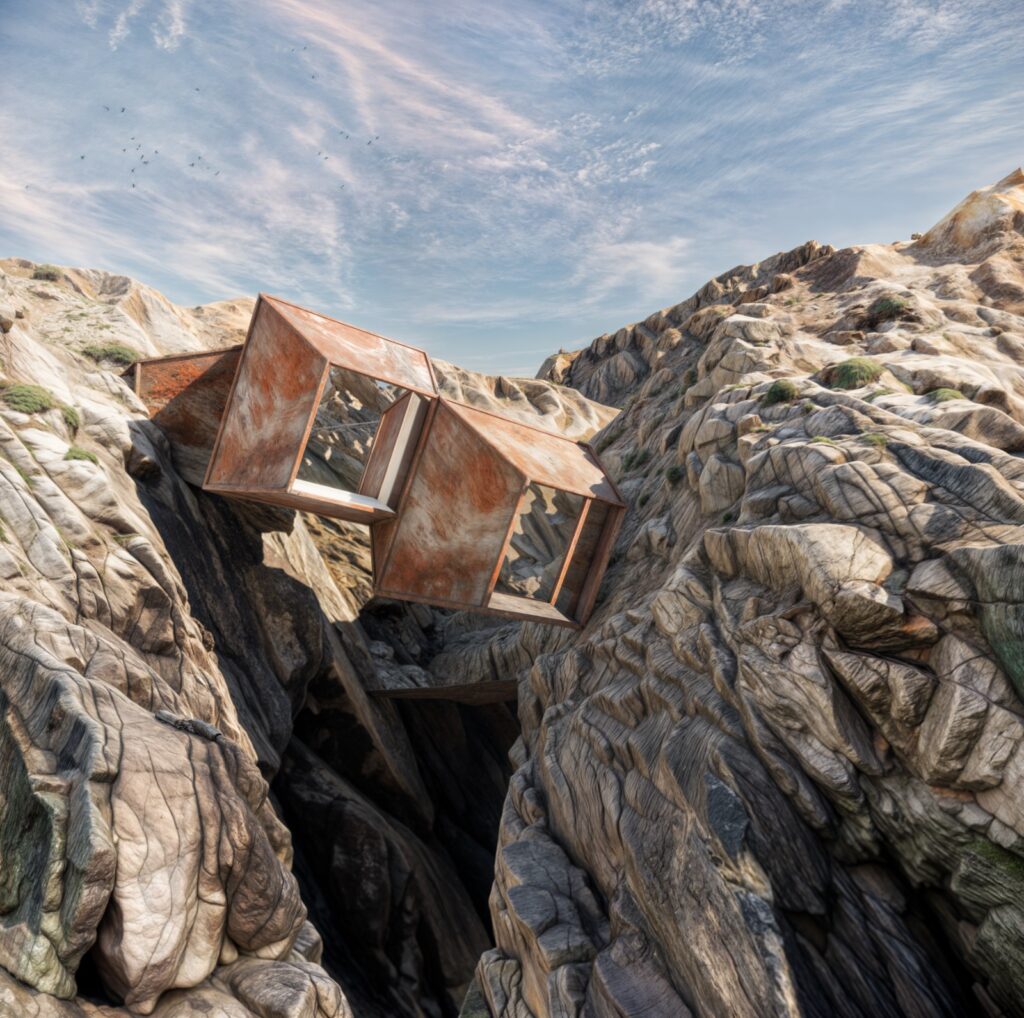The Concept
when tasked with designing a cabin, we envisioned elegant, simple forms that would stand in contrast to the complex, organic shapes of nature. as we considered the landscape it would inhabit, we realized that this cabin wouldn’t just sit on the land—it would CLING to it, embracing the terrain in a dynamic and seamless interaction.
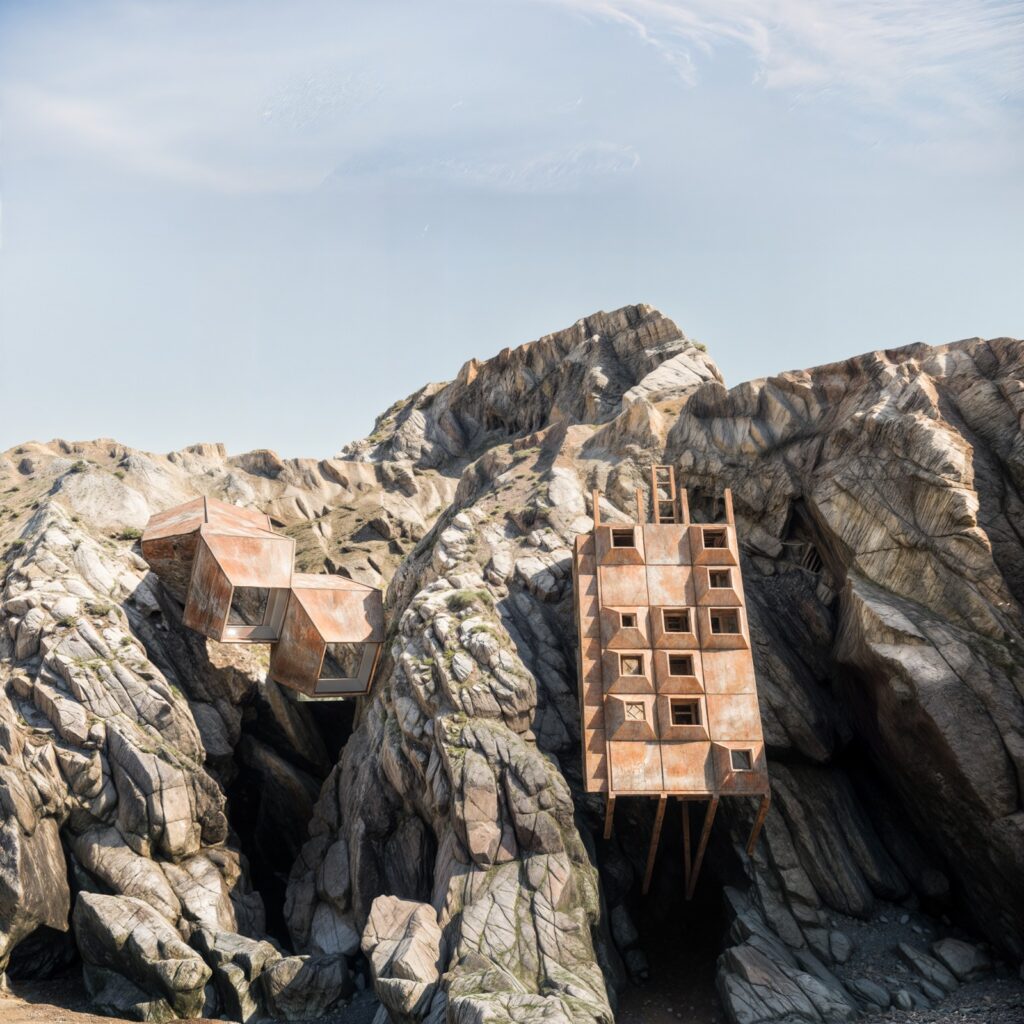
Mood board
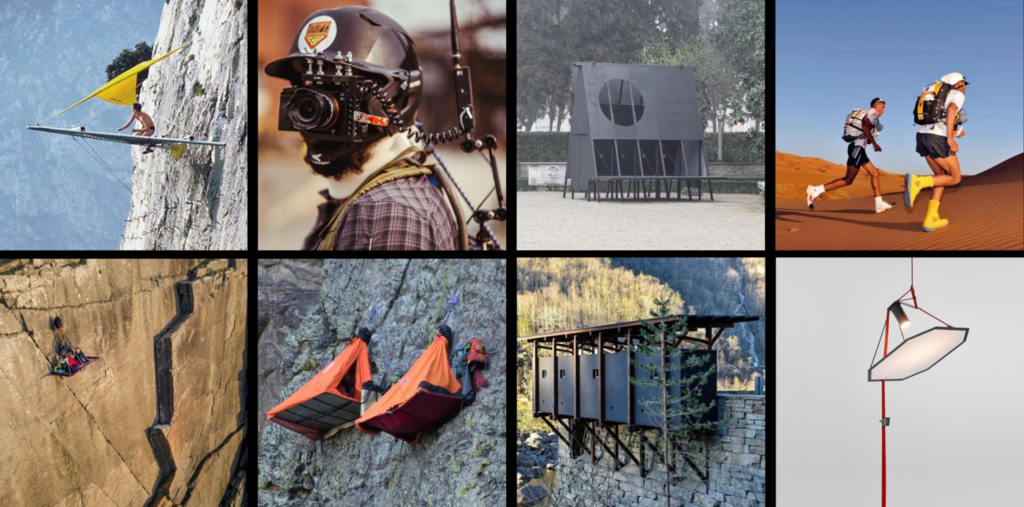
Sketches
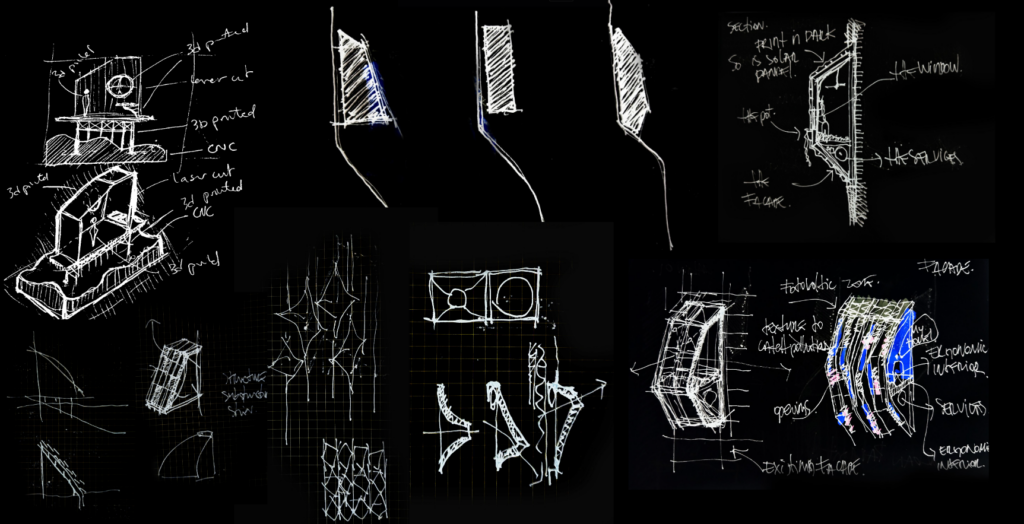
Initial Design Ideas
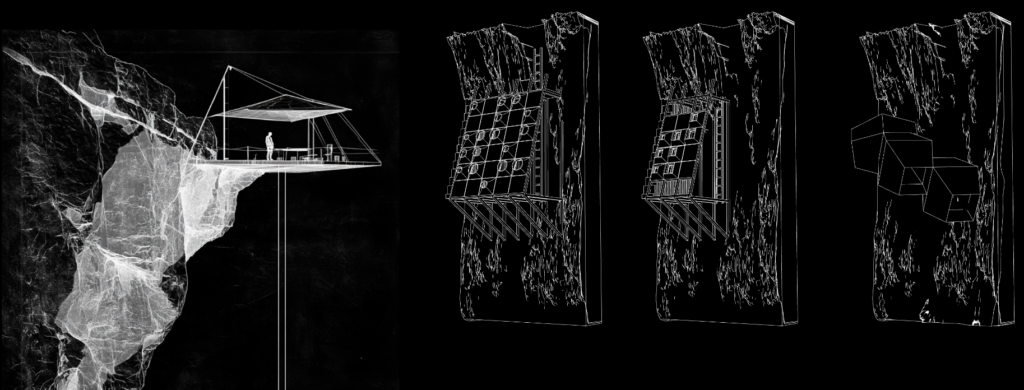
Assembly Strategy

3D Printing
During our recent 3D printing project for facade panels, we encountered some challenges. Initially, we had issues with tolerances using a consistent geometry. Switching from curved to straight surfaces significantly improved precision. We also found that material wasted on support structures often surpassed that used in the original prints, prompting us to focus on more efficient designs.
Design Prototypes & Observations
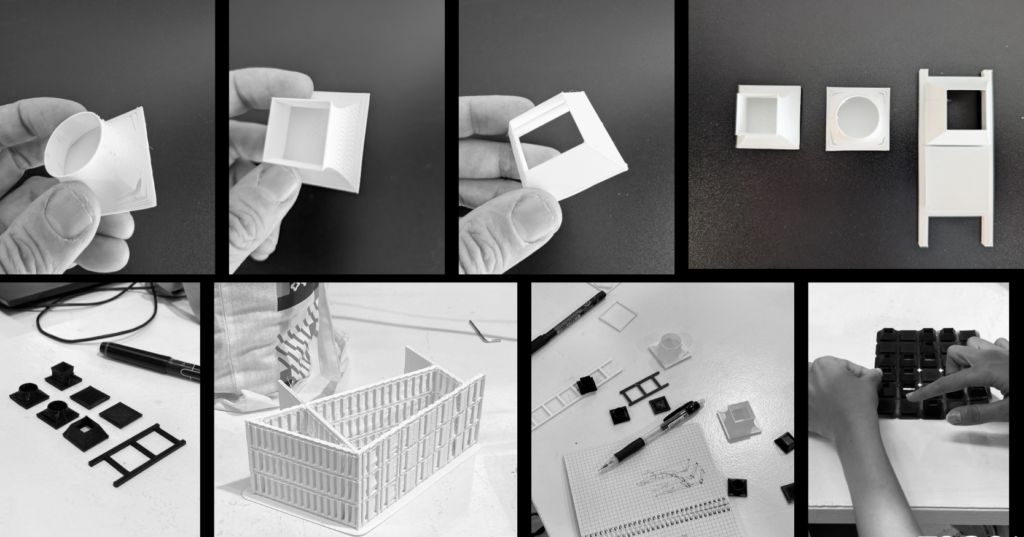
Technical Drawings
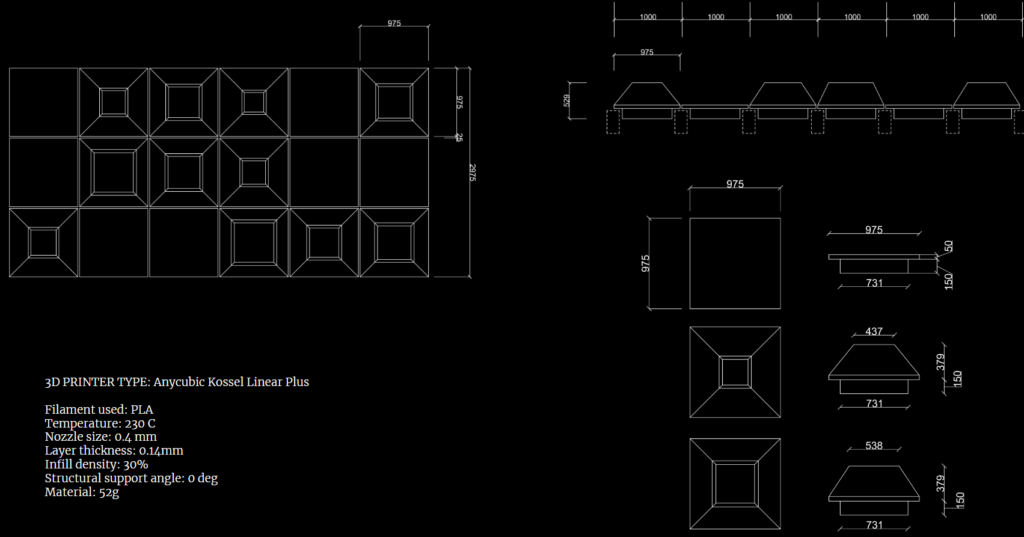
Final Printing Decisions
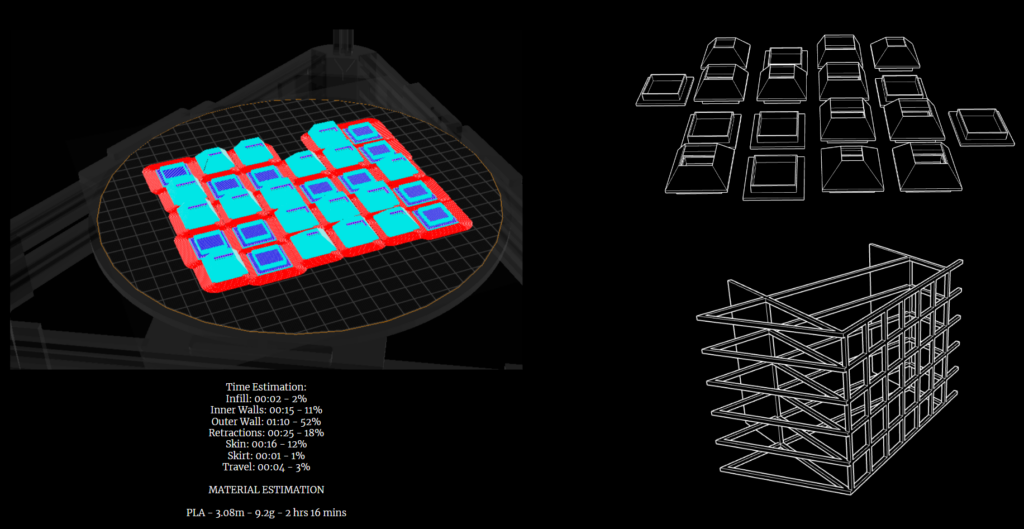
Assembly
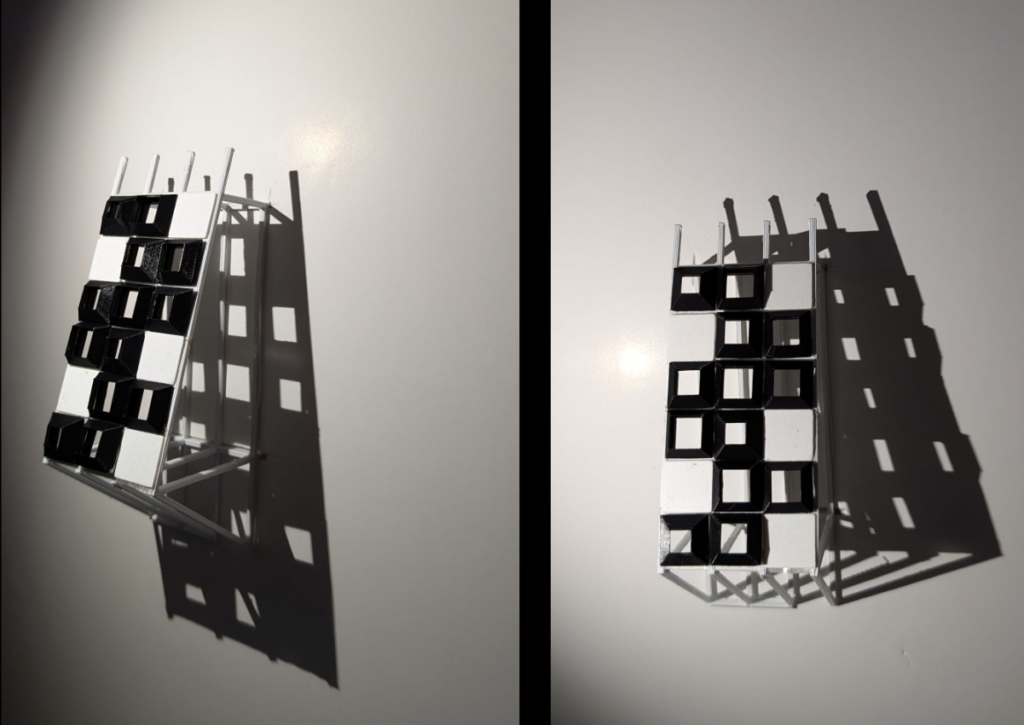
CNC MILLING
In our project to create a landscape for our cabin using CNC milling, we explored foam and timber.We started with a six-step file preparation. The foam produced impressive results, offering a smooth finish and accurately capturing the geometry. In contrast, when we used glued plywood layers for thickness, the outcome was rough and lacked detail due to the varying thin layers, requiring some sanding. These experiences highlighted the strengths and limitations of each material, informing our future CNC milling choices.
Design Prototypes & Observations: Testing Foam

Design Prototypes & Observations: Testing Plywood
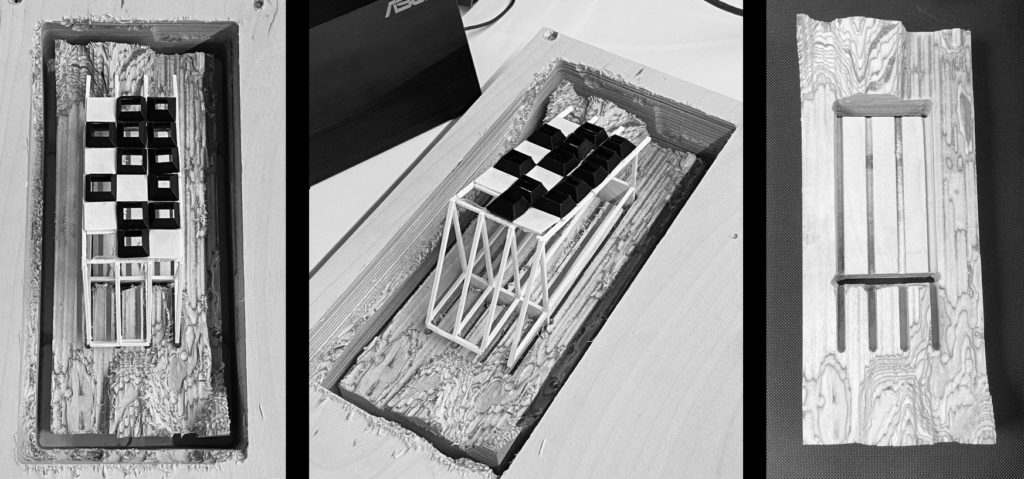
Technical Drawings
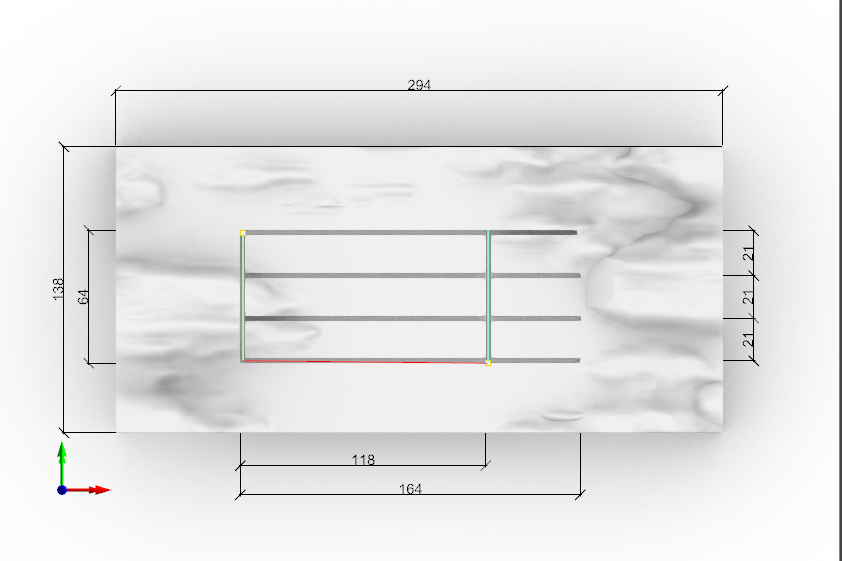
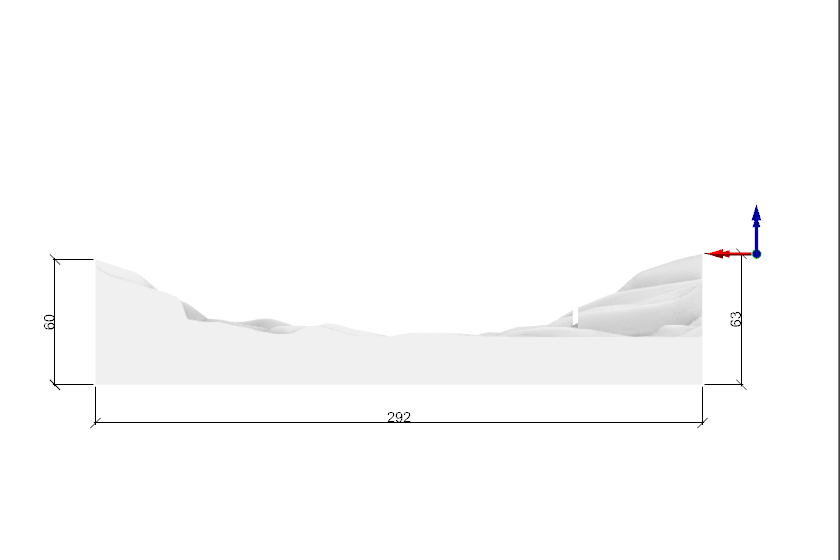
Final Milling Decisions
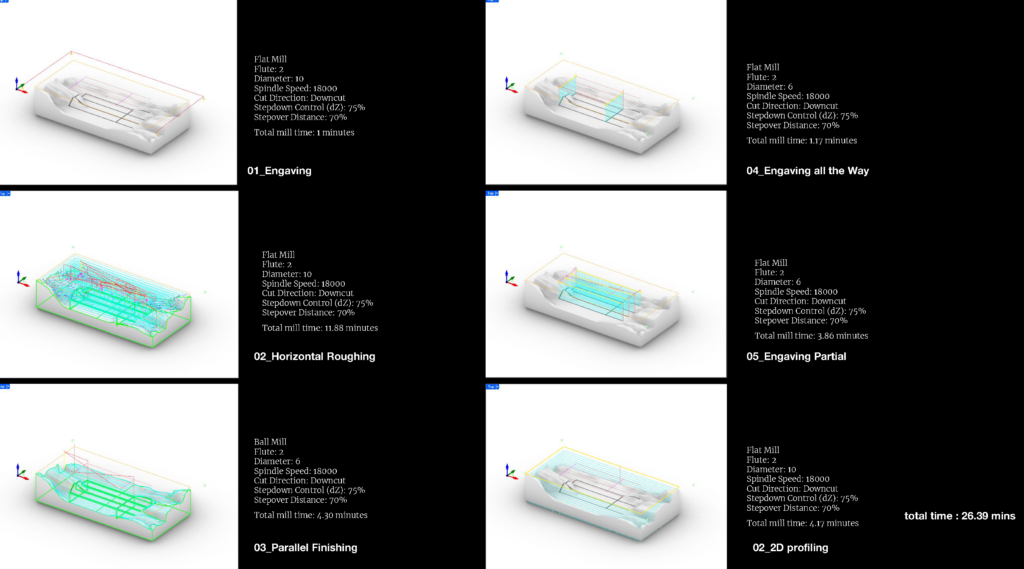
Laser Cutting
In our laser cutting project, we utilized 0.8 mm polypropylene to explore the transformation of 2D geometry into 3D objects. Using a single box geometry, we applied a stacking strategy and experimented with different joint designs. This allowed us to investigate various tolerances and how they affect the assembly of the box. Our exploration highlighted the versatility of polypropylene and the creative potential of laser cutting in architectural design.
Design Prototypes & Observations
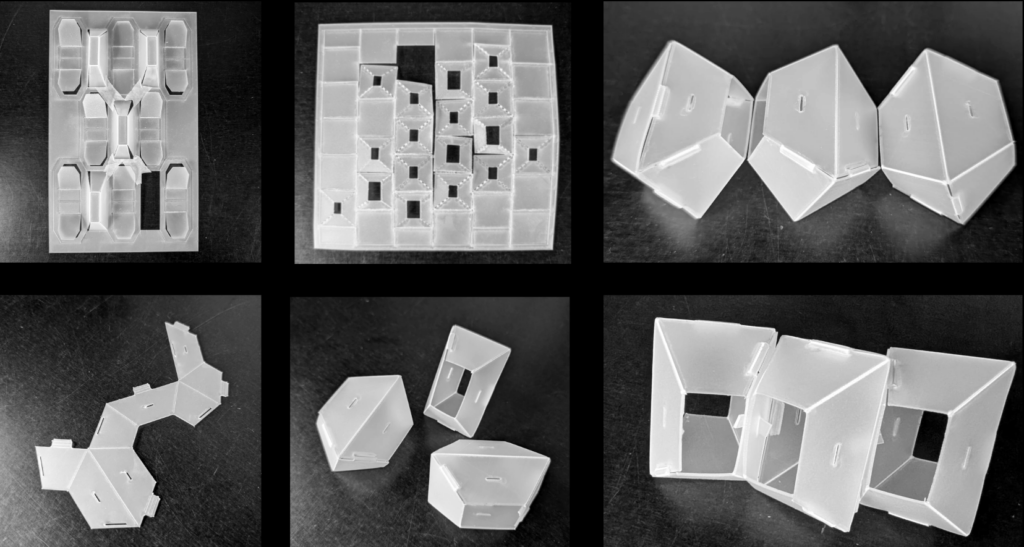
Testing 0.5mm acrylic sheet
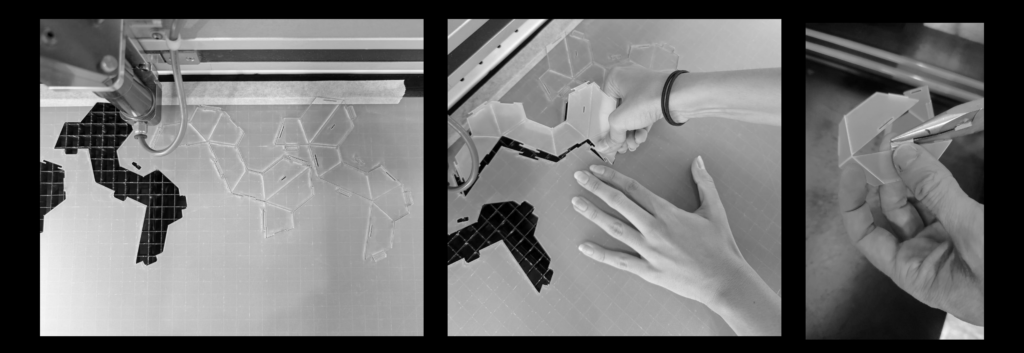
Technical Drawings and Final Cutting Decisions
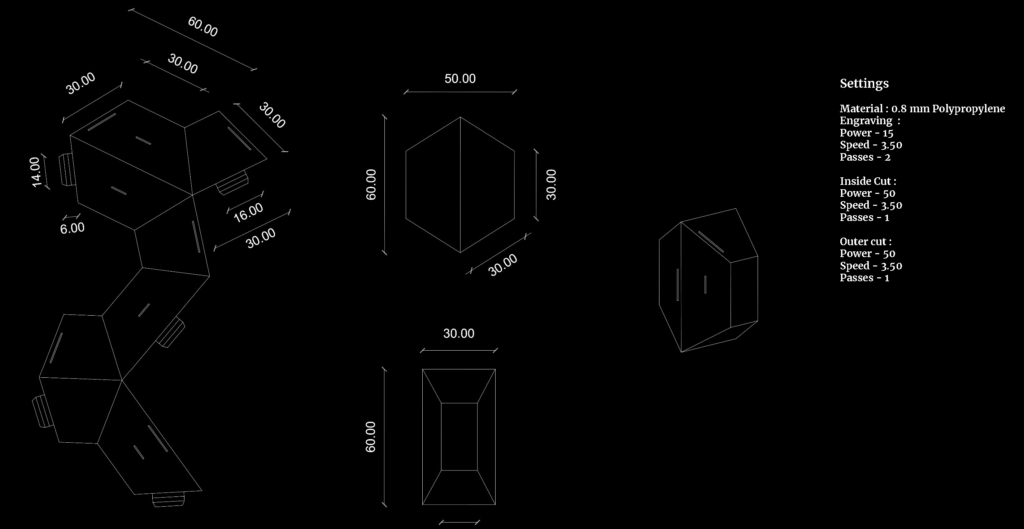
Final Assembly
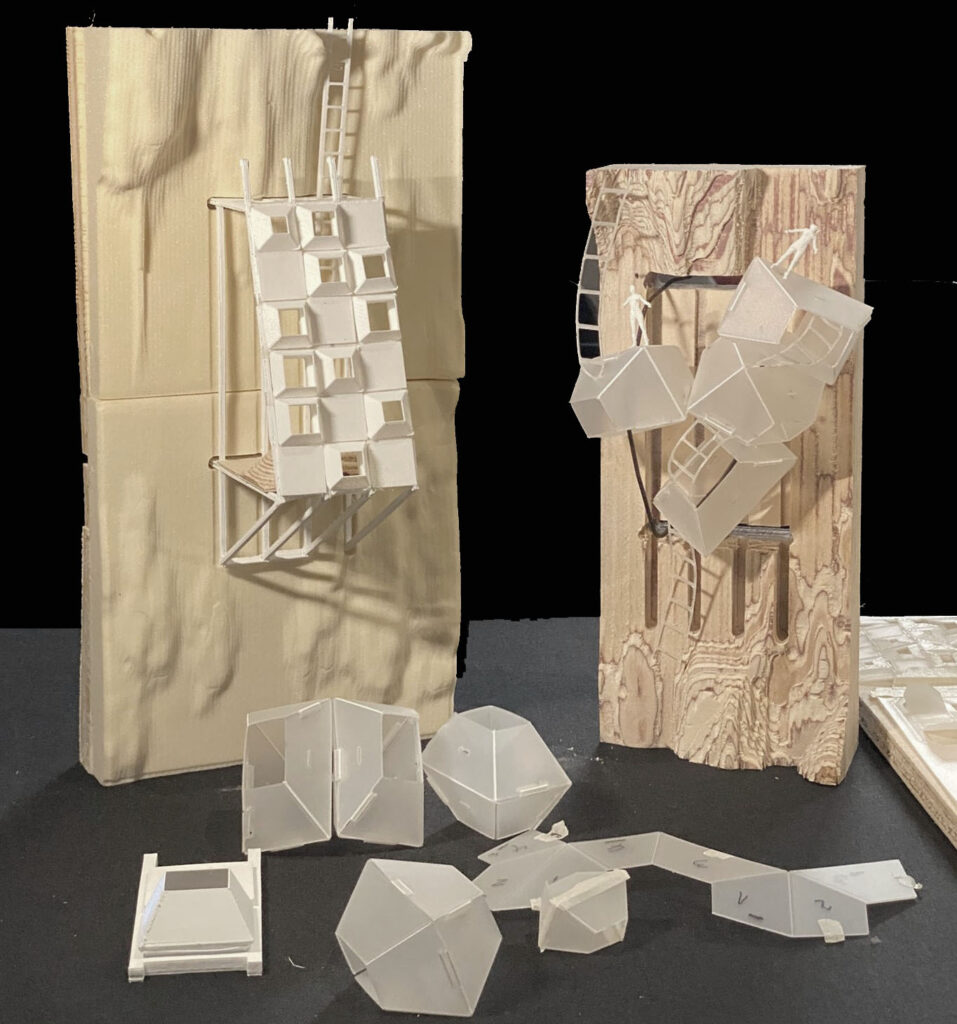
Final Renders
